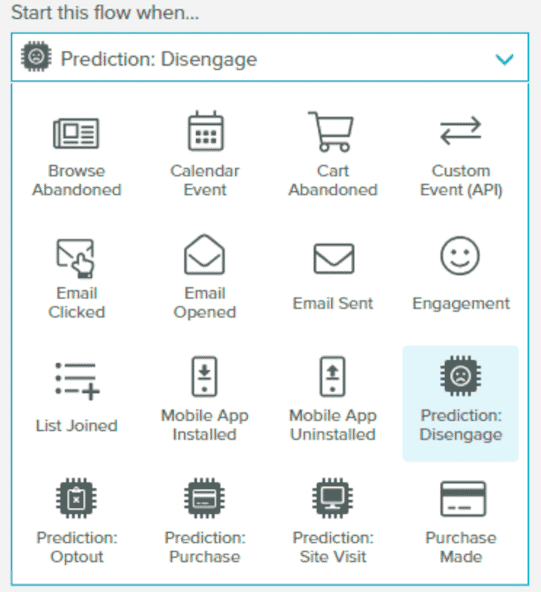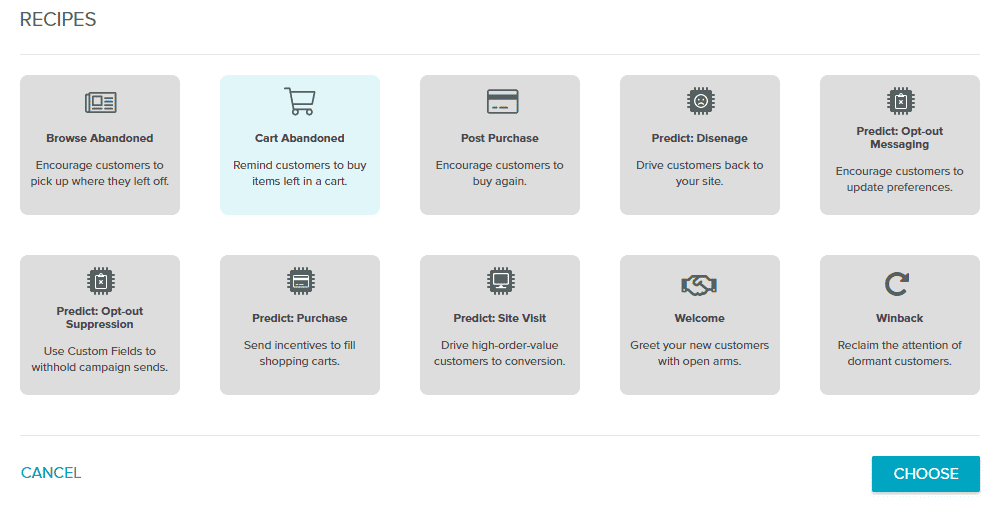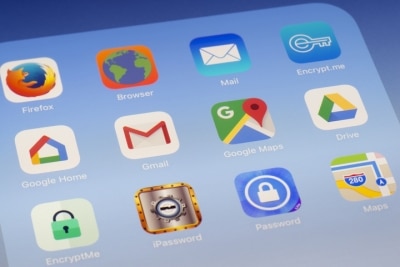Article
Predictive Marketing 101: Using Sailthru’s Predictive Entries to Get Ahead of Your Customers
December 11, 2018

Since they’re typically a direct response to a consumer behavior, triggered messages really enable personalization. Winback messages, for example, are a great way to re-engage a lapsed customer. But this tactic is reactive by nature. With predictive marketing, you can see that disengagement coming and head it off before there’s a need for a winback. While this may sound like a nightmare to implement, Marigold Engage by Sailthru’s Predictive Entries for Lifecycle Optimizer automates predictive marketing, tactics making it an effective tool for marketers at enterprise-level brands or lean teams.
Lifecycle Optimizer users already have access to Choose Your Own Adventure-style templates designed to make triggered messages easier. The Recipes, as we call them, come with recommended flows leading up to winback emails, in addition to welcome, post-purchase, and browse and cart abandonment.
Now, they allow our customers to look beyond people’s actions and personalize communications based on their (likely) future actions with Predictive Entries.
Our Prediction Manager uses an artificial intelligence model that’s customized for your account and trained on the behavior of your customers. That predictive marketing helps determine the likelihood of various events:
Predictive Entries Use Case 1: Likelihood to Disengage From Your Emails
They opened your emails and clicked your links… until they didn’t.
Use case: Before a customer gets to that point of disengagement, Predictive Entries can identify those likely to disengage from your messages. Place them in a flow geared to drive them back to your website or mobile app to remind them why they signed up in the first place. You can also begin suppressing them from certain messages until their engagement is no longer at risk.
Predictive Entries Use Case 2: Likelihood to Opt Out of Your Emails
Even worse than the disengagement is the opt out. If someone unsubscribes from your list, then they really won’t click your links anymore.
Use case: Similar to disengagement, Predictive Entries can analyze a customer’s historic engagement to determine who’s likely to opt out altogether. Give your customers a chance to cool down before you lose the opportunity to market to them in the future. Suppress sends for a while until the probability of opting out decreases. Additionally, we recommend encouraging people to update their preferences, letting them dictate when and how often they hear from you.
Predictive Entries Use Case 3: Likelihood to Visit Your Website
The good news is, predictive marketing isn’t just about extinguishing sparks before they become fires. Predictive Entries can determine the probability of positive events, as well.
Use case: For example, the likelihood that someone will visit your website within the next week. Knowing they’re on the verge of a visit gives you a chance to prepare. Armed with that knowledge, try to convert them from browser to buyer with incentives to fill their shopping carts, such as a time-sensitive discount or bonus loyalty points. If they’ve shopped with you before, we recommend enticing them with messaging that highlights new or trending products, paired with recommendations just for them.
Predictive Entries Use Case 4: Likelihood to Make a Purchase
We saved the best for last. The likelihood someone will make a purchase is probably our predictive marketing flow you’re most excited about.
Use case: A post-purchase series can show your appreciation and build the foundation for the next sale. Pre-purchase messaging works similarly. Predictive Entries determines who’s close to converting, as well as what they’re likely to buy. Recommend the products they’re predicted to purchase; yes, all the way down to SKU level. That will help you stay away from a generic batch-and-blast to primed customers. Even better, the predictive entries flows for likely purchasers can also be tailored based on who’s likely to spend more than $100. Knowing a customer’s potential price range keeps you from losing a sale by scaring them off with too-pricey items or conversely, losing potential order value.
How Prediction Manager Works
Created by our Data Science team, Predictive Entries have placeholders for message and cadence testing, as well as specific actions. They also go into effect quickly. If you activate a flow on Monday, your message stream will be updated by Tuesday… and again Wednesday… and every day, as customers’ likelihood to do something changes.

The models are designed to avoid repetitively adding the same customers each day. You can also use in-flow frequency capping to limit entries, whether periodically or just once.
From there, you can use predictive marketing to send proactive triggers. That helps ensure your customers’ loyalty before you’ve had a chance to lose it. We’ve essentially given our customers — 400 across media, retail, ecommerce and tourism — easy, one-click access to artificial intelligence. There’s more where that came from, which we look forward to releasing over the next year.
If you’re a Sailthru customer and want to learn more about Predictive Entries, please reach out to your Customer Success Manager. If you haven’t worked with us before, click here for a demo.
The State of Brand Loyalty in the U.S. in 2023
Related




